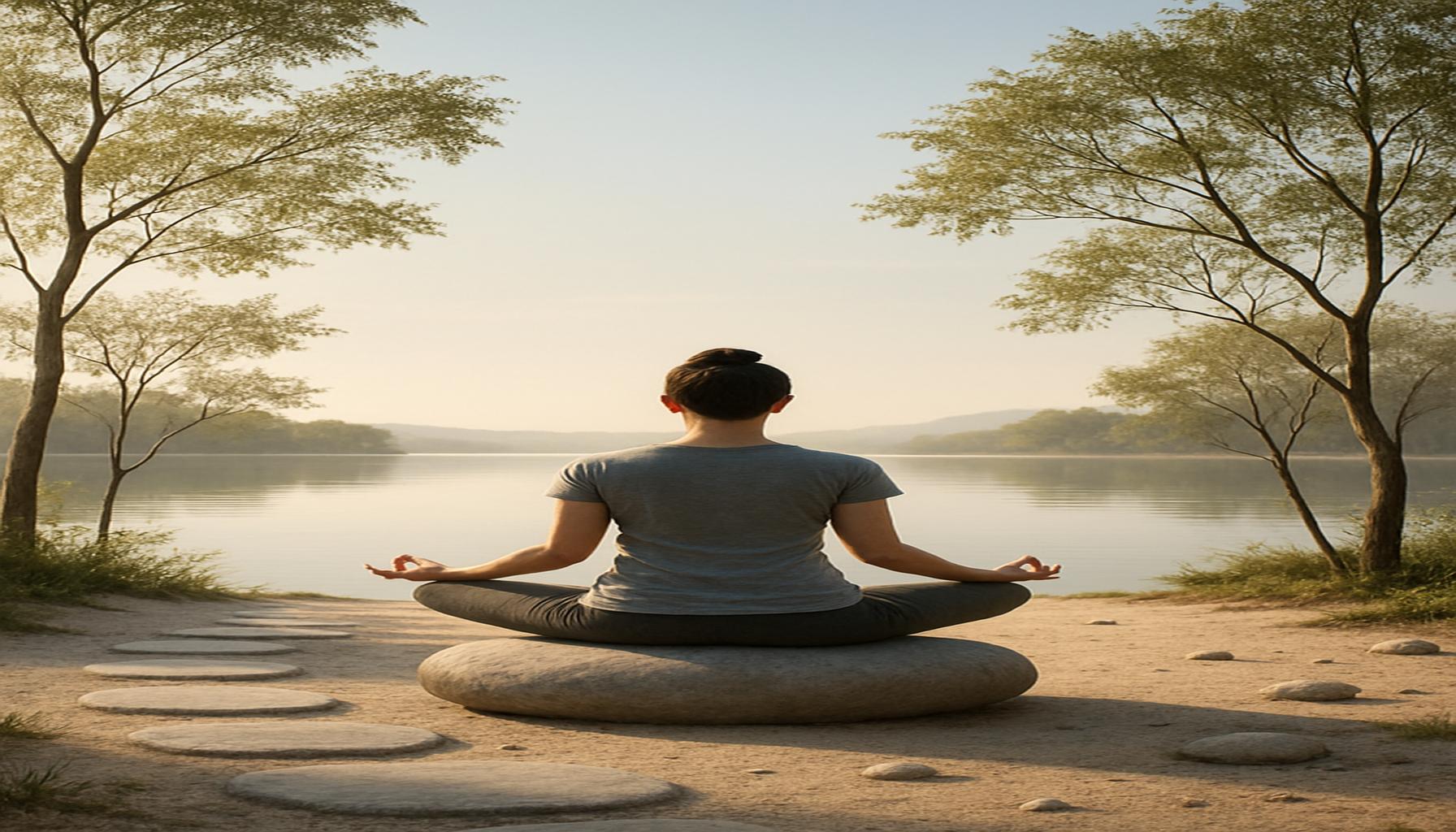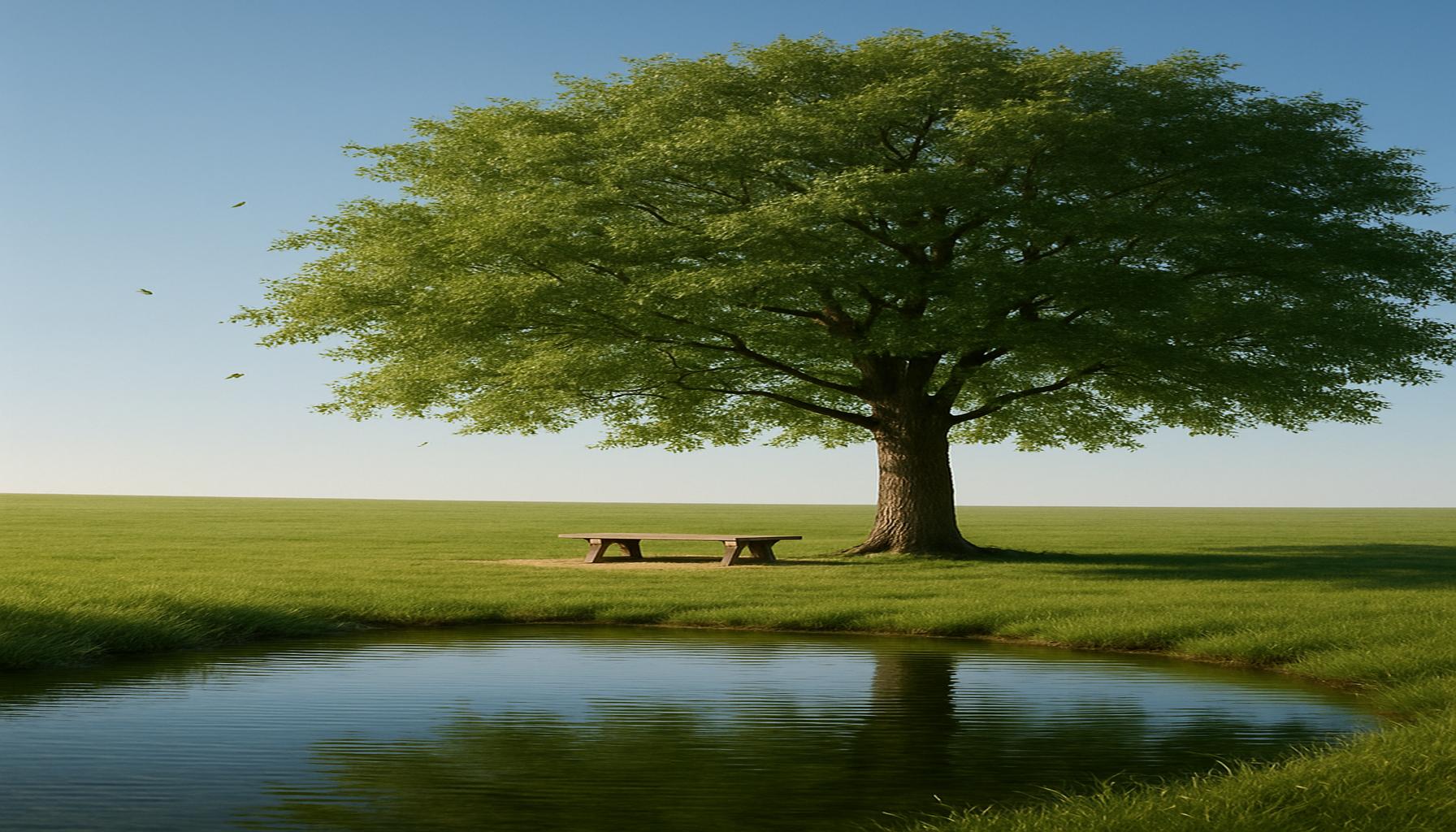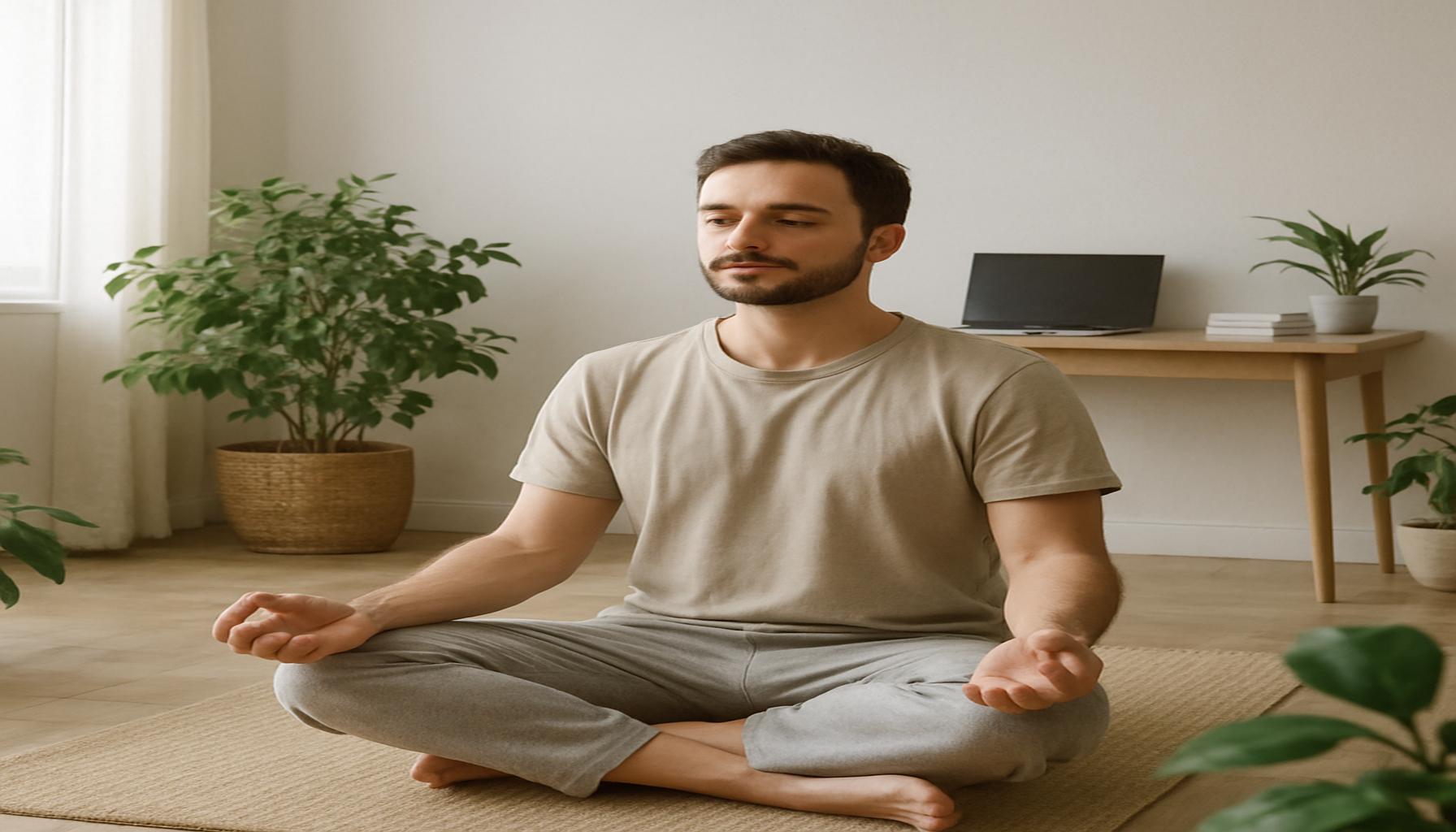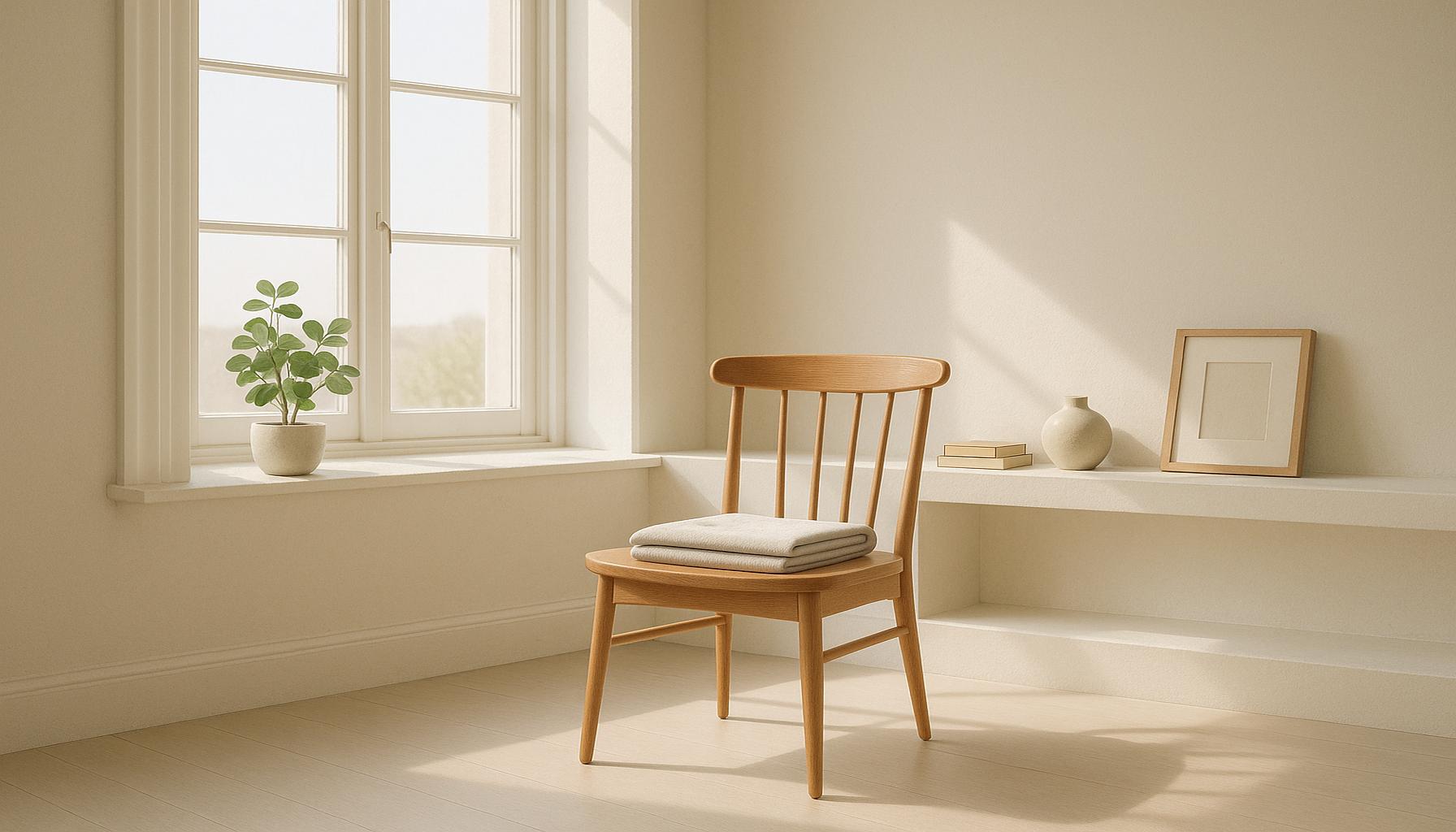Mindfulness and Minimalism: Strategies to Find Calm in an Accelerated World

Finding Peace in a Hectic World
In an era where technology facilitates constant interaction and information flows freely, mindfulness and minimalism stand out as transformative practices that allow individuals to create space for calm amidst the chaos. These principles empower people to take back their time and nurture their mental well-being, acting as a counterbalance to the frenetic pace of contemporary life.
- Mindfulness serves as an anchor, guiding individuals to be present at the moment, which in turn diminishes feelings of anxiety and stress.
- Minimalism is about clearing away the unnecessary, encouraging individuals to streamline their lives by eliminating both physical and mental clutter, therefore embracing a more uncomplicated existence.
By fusing these two philosophies, individuals can uncover strategies that foster serenity in an era driven by rapid transformations and distractions. It begins by recognizing how incessant notifications from smartphones, endless social media scrolls, and a barrage of emails can negatively impact mental health. Research indicates that constant connectivity can lead to feelings of burnout and anxiety, making moments of tranquility increasingly vital.
Moreover, embracing minimalism involves critically evaluating your possessions and commitments. For example, rather than holding on to items that no longer spark joy or serve a purpose, individuals can benefit from decluttering their spaces. This not only simplifies their physical environment but also provides mental clarity. Studies suggest that a tidy, organized surroundings can boost productivity and creativity, allowing individuals to focus on what truly matters.
Meditation and Mindful Living Techniques
Alongside decluttering, integrating mindfulness through practices like meditation can profoundly enhance one’s quality of life. Techniques could include guided meditations, where individuals visualize their ideal tranquil space or breathing exercises that bring attention back to the present moment. These practices encourage mindfulness in daily routines, transforming mundane tasks into opportunities for meditation. For instance, turning daily chores such as washing dishes into a mindful experience can shift one’s perspective, making them feel more grounding.
By exploring these pragmatic approaches to mindfulness and minimalism, individuals are better equipped to navigate a world that often feels overwhelming. The union of these practices not only enhances personal well-being but also fosters a deeper sense of purpose and clarity in life. Ultimately, committing to these lifestyle changes can lead to profound inner peace in an environment that continuously pushes for more and more.
As we venture further into a fast-paced society, embracing the methodologies of mindfulness and minimalism offers promising avenues to cultivate a fulfilling existence. To discover more about these strategies, readers are encouraged to explore books, podcasts, and workshops that delve into the transformative impacts of these practices, paving the way for a life characterized by calm and clarity.
DISCOVER MORE: Click here to simplify your life
Embracing Mindfulness: A Pathway to Presence
At its core, mindfulness is the practice of maintaining a moment-by-moment awareness of our thoughts, feelings, bodily sensations, and surrounding environment. In today’s fast-paced society, where distractions lurk at every corner, this practice offers a sanctuary. Studies have shown that incorporating mindfulness into daily routines can lead to decreased levels of stress and anxiety, making it a vital tool for nurturing mental health.
A common starting point for many is mindful breathing. This technique involves focusing solely on breathing in and out, redirecting attention from external chaos to internal tranquility. Taking just a few minutes each day to practice this can create noticeable shifts in one’s mood and focus. In fact, research from the American Psychological Association suggests that individuals who engage in regular mindfulness practices report greater life satisfaction and emotional regulation. The integration of mindfulness can transform the mundane into something meaningful, as one learns to appreciate the richness of each moment.
Practical Strategies for Mindfulness
To cultivate mindfulness effectively, it is beneficial to incorporate it into daily activities. Below are some strategies that can be woven into everyday life:
- Mindful Eating: Instead of rushing through meals, individuals can take the time to savor each bite, noticing textures and flavors. This not only enhances enjoyment but can also promote healthier eating habits.
- Walking Meditations: During a daily walk, pay attention to the sensations of your feet touching the ground and the rhythm of your breath. Engage with your surroundings, observing colors and sounds, which can ground you in the present moment.
- Journaling: Set aside a few moments each day for reflective writing. This can help clarify thoughts and emotions, facilitating a deeper understanding of oneself.
As mindfulness develops, it creates a sense of space between stimulus and response. This space is crucial, allowing individuals to pause before reacting to stressors, ultimately leading to a more thoughtful approach to challenges. For instance, rather than responding to an email immediately, taking a moment to breathe and reflect can foster healthier communication and reduce impulsive reactions.
The Role of Minimalism in Reducing Mental Clutter
While mindfulness centers on internal awareness, minimalism tackles external distractions by advocating for a simpler lifestyle. Adopting minimalism does not merely mean getting rid of physical items; it extends to commitments and mental clutter as well. Research from Harvard Business Review highlights that individuals adopting a minimalist lifestyle report improved focus and increased productivity, stemming from a conscious decision to prioritize only that which adds value to life.
By actively pursuing a minimalist approach, individuals can streamline their environments and, subsequently, their minds. This simplification fosters clarity, providing a fertile ground for mindfulness to flourish. As one declutters possessions and reduces commitments, there is often a newfound clarity that paves the way for deeper connections and a more focused life.
Through the combined practice of mindfulness and minimalism, individuals can draw from a rich toolkit designed to combat the overwhelm that characterizes modern existence. By consciously choosing where to direct attention and energy, it becomes possible to reclaim one’s sense of self in an increasingly chaotic world.
| Category | Advantages |
|---|---|
| Mindfulness Practices | Enhances clarity and reduces stress |
| Minimalist Living | Promotes freedom from clutter and distractions |
| Emotional Well-being | Supports mental resilience and emotional balance |
| Focus and Productivity | Increases concentration, enabling deeper work |
In our fast-paced society, adopting mindfulness practices can greatly enhance mental clarity and significantly reduce stress levels. Engaging in mindful activities such as meditation and breathing exercises allows individuals to reconnect with their inner selves, fostering a deeper sense of tranquility. On the other hand, embracing minimalist living effectively promotes liberation from unnecessary clutter, creating a serene environment that minimizes distractions. The combination of these approaches not only enhances emotional well-being but also supports greater mental resilience, allowing individuals to navigate life’s challenges with more balance and grace. A clear focus can lead to improved productivity, as a minimalist mindset encourages deeper engagement with tasks, ultimately driving efficiency and satisfaction. Exploring these strategies not only cultivates a calmer existence but also lays the foundation for a more fulfilling life in today’s accelerated world. Discover how you can implement these concepts to transform your daily experiences and achieve a harmonious balance.
DISCOVER: Click here to simplify your life
Navigating the Intersection of Mindfulness and Minimalism
The merger of mindfulness and minimalism is not just a fad; it is a profound way to reclaim personal autonomy in a world that demands incessant engagement. As modern life becomes increasingly saturated with information, the ability to focus—both mentally and physically—has never been more crucial. Research from the University of California revealed that prolonged exposure to distractions, such as technology, diminishes the brain’s capacity to concentrate and fosters cognitive overload. Therefore, learning to navigate this frantic environment through the principles of mindfulness and minimalism can yield significant mental and emotional benefits.
Creating a Mindful Minimalist Space
One effective way to intertwine mindfulness and minimalism is to cultivate a mindful minimalist space at home. This entails creating an environment that promotes tranquility and supports well-being. Here are some ways to achieve this:
- Intentional Decor: Choose furniture and decor that resonate with personal values and aesthetics. Opt for fewer, but meaningful pieces that invoke peace and joy. For example, a calming color palette can serve to create a soothing atmosphere.
- Nature Influences: Incorporate elements of nature, such as plants or natural light, which can enhance mood and promote relaxation. Studies, including one from the University of Technology in Sydney, show that greenery can significantly reduce stress and increase feelings of well-being.
- Decluttering Rituals: Set aside time regularly to assess and remove items that no longer serve a purpose or spark joy. This ritual not only maintains a tidy living space but also fosters a mindful attitude towards belongings and consumption.
By cultivating a mindful minimalist space, individuals may nurture a sanctuary away from incessant information overload. This dedicated space can serve as a daily retreat for mindfulness practices like meditation or simple breathing exercises, reinforcing a cycle of calm and clarity.
Digital Minimalism: Curating Online Experiences
In addition to physical spaces, embracing digital minimalism is pivotal in today’s technology-driven landscape. The constant barrage of notifications and online connections can easily become overwhelming, detracting from mental peace. Here are actionable strategies for cultivating a more mindful digital presence:
- Social Media Detox: Regularly reassess the social platforms you interact with. Unfollowing accounts that contribute to anxiety or negativity can cultivate a healthier online atmosphere. Research conducted by the Pew Research Center shows that excessive social media usage is linked to increased feelings of loneliness and depression.
- Scheduled Connectivity: Limit the time spent online by setting specific windows for checking emails and social media. Tools and apps designed to track screen time can aid in identifying and reducing excessive engagement.
- Content Consumption: Be selective about the information consumed. Engage with content that enhances knowledge or well-being rather than contributing to feelings of stress. This could involve curating a list of go-to websites, podcasts, or videos that inspire rather than overwhelm.
By practicing digital minimalism, individuals can enhance their mindfulness, fostering greater control over attention and emotional responses. It is increasingly clear that the essence of our well-being lies in the balance between engagement and retreat.
The convergence of mindfulness and minimalism facilitates a rich, thoughtful approach to life that counters today’s rapid pace. By intentionally crafting both our environments and our digital landscapes, we open the doorway to a more serene existence, empowering us to thrive amidst the chaos of modern life.
DIVE DEEPER: Click here to discover effective strategies
Embracing Serenity Through Mindfulness and Minimalism
In a society relentless in its pursuit of achievement and constant connectivity, the dual practices of mindfulness and minimalism emerge as powerful antidotes to stress and distraction. By intentionally simplifying our physical spaces through mindful decor, natural elements, and regular decluttering rituals, we create sanctuaries that foster peace and clarity. Similarly, a commitment to digital minimalism allows us to curate our online experiences, aligning our digital consumption with our mental well-being.
The intersection of these two principles offers transformative strategies for navigating the complexities of modern life. As we become more selective about what we engage with—both in our environments and online—we empower ourselves to reclaim control over our attention and emotional responses. The implications of these adjustments are profound: not only do they enhance psychological resilience, but they also contribute to a more fulfilling, purpose-driven existence.
As we find ourselves inundated with information, the real challenge lies in discerning what truly enriches our lives. Adopting a mindful minimalist approach is an invitation to step back, reflect, and understand our values better. This journey toward simplification and awareness can be a critical step in achieving lasting calm amid the noise of life. For those seeking to explore further, engaging with resources on mindfulness practices, minimalism philosophies, and even mindfulness-focused workshops can provide valuable insights and tools for sustaining this journey toward peaceful living.
Ultimately, embracing mindfulness and minimalism can lead to a more harmonious existence—one that prioritizes mental well-being and nurtures a sense of presence in an expedited world.


